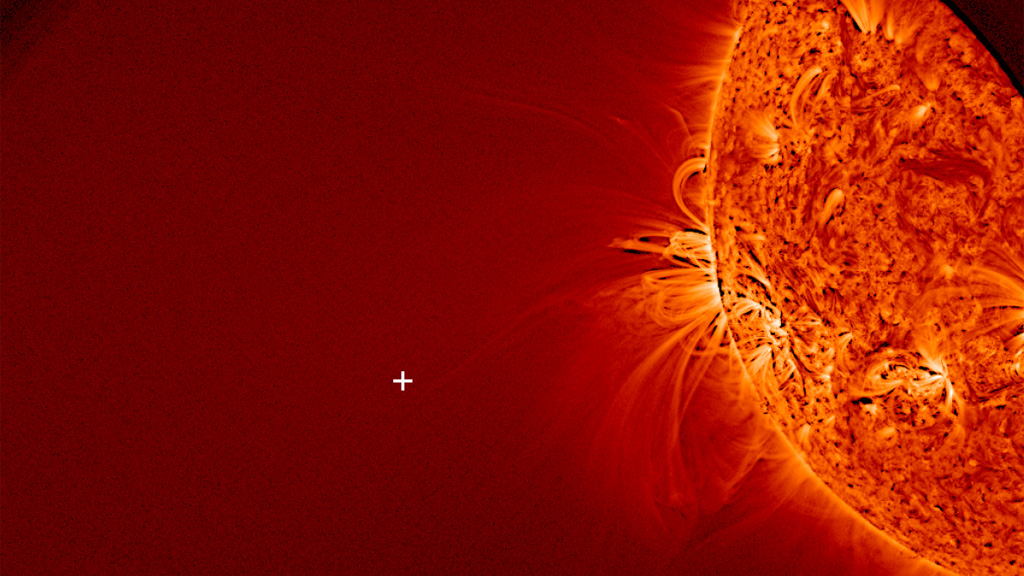Watch Comet Ison get ‘destroyed’ by the sun (or was it?)
Scientists say it is unlikely that Comet Ison has survived its journey around the sun, with video from Nasa showing the comet appearing to disappear – though questions still remain.
The 1.2-mile wide lump of rock and ice passed close to the sun at 6:37pm last night, and was approaching 730,000 miles from the star’s surface.
At that distance, it was encountering temperatures of 2,700 degrees Celsius which would melt the ice and evaporate rock. It was hoped, however, that the comet was large enough to make it around the sun, so that it could have been viewed by people on Earth.
If the comet had passed the sun, it was predicted that it would have been the brightest comet visible from earth seen this century.
However, on Friday scientists from Nasa watching the comet’s journey via Nasa’s solar dynamics observatory (SDO), said they could not see the comet. The image below, from Nasa’s SDO, shows the sun, the white cross shows where the comet should have been.

“We didn’t see Comet ISON in SDO,” said Dean Pesnell, project scientist for SDO. “So we think it must have broken up and evaporated before it reached perihelion (the point at which it is nearest to the sun).”
However, question markshave been raised over what happened to Ison. Images from the Solar and Heliospheric Observatory shows a brightening area on the path of the comet after it would have passed the sun, as shown here.